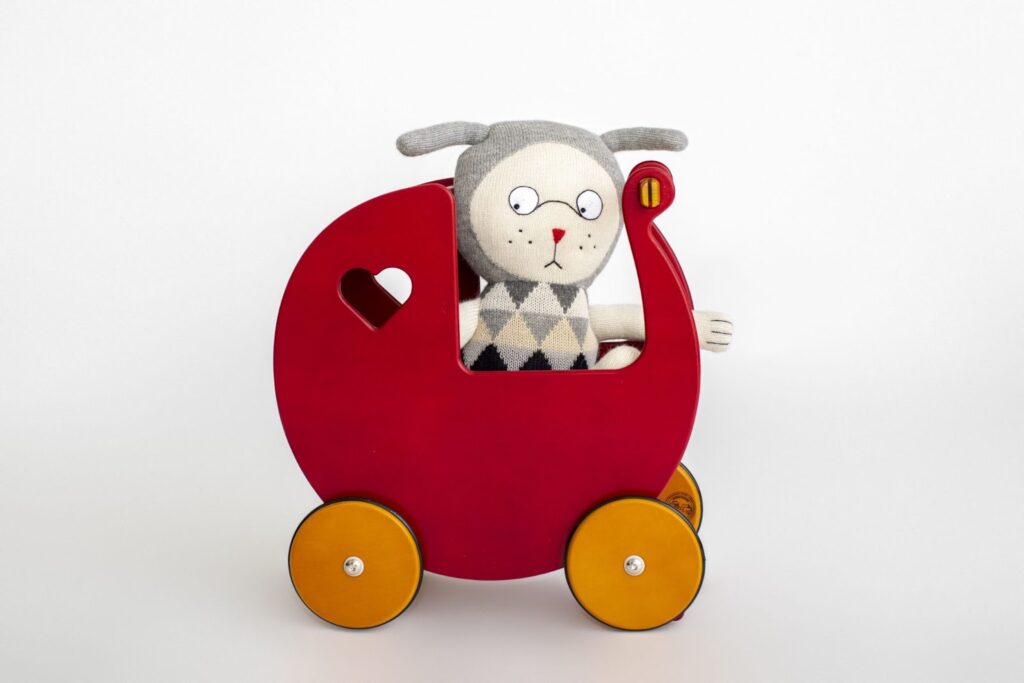When Do Babies Start Playing With Toys?

Introduction
Welcome to the magical journey of discovery and play! Have you ever wondered, “When do babies start playing with toys?” It’s a question that captures the hearts of parents and caregivers as they watch their little ones grow and explore the world around them. Toys are not just amusement tools; they are vital for development, offering endless opportunities for learning and bonding. From the gentle jingle of a rattle to the vibrant colors of a doll stroller, every toy opens a new chapter in a baby’s journey of exploration. Join us as we dive into the wonderful world of play and its impact on our children’s growth.
Why is Playing Important?
Cognitive and Physical Development
Play is the cornerstone of cognitive and physical development in babies. From the moment they grasp a soft toy, they embark on a journey of discovery. Toys like educational toys for toddlers aren’t just for fun; they stimulate the senses, encourage problem-solving skills, and foster an understanding of cause and effect. When a baby pushes a toy or takes tentative steps with a baby walker, they’re not just moving but developing crucial motor skills, balance, and coordination. Each play session is a step towards independence, helping babies learn to navigate the world around them. As they grow, the complexity of toys can evolve to challenge their developing skills, ensuring that play remains a crucial component of their daily activities.
Emotional and Social Growth
The value of play extends beyond physical and cognitive development; it’s also a vital part of emotional and social growth. Toys and playtime activities offer unique opportunities for babies to express themselves, experience joy, and even navigate the complexities of social interactions. Through play, babies learn to communicate their desires and frustrations, helping to build the foundation of emotional intelligence. Playing with caregivers and other children, such as sharing a doll stroller or taking turns riding on a ride-on truck, teaches valuable lessons about empathy, sharing, and cooperation. These early experiences of give-and-take are critical in shaping how they interact with others as they grow, making play an essential element of their emotional and social development journey.
When Do Babies Start Playing With Toys
Birth to One Month
Babies explore the world through sensory play in the earliest weeks of a baby’s life. Though it might not look like ‘playing’ in the traditional sense, the interaction with high-contrast black-and-white patterns or soft, gentle sounds introduces them to play’s fundamental aspects. A baby’s vision is still developing, so simple and visually stimulating educational hanging toys for toddlers are perfect during this stage. These early experiences lay the groundwork for cognitive development as babies start to understand their environment and how to interact with it, even in a limited capacity.
Two to Four Months
Babies become more engaged with their surroundings as they grow into their second and third months, and this is when dangling toys with sound, such as rattles or musical toys, become fascinating to them. Introducing Moover toys that encourage babies to reach out and grasp can be particularly beneficial for developing motor skills and hand-eye coordination. During this stage, babies also begin to recognize familiar faces and start smiling, making playtime an excellent opportunity for bonding.
Four to Six Months
Babies’ interaction with introducing toys between four and six months becomes more deliberate. They might reach for a doll stroller with purpose, showing preference for specific toys. Teething toys and those that make noise or have different textures are especially appealing as babies explore with their mouths as much as their hands. This period is crucial for sensory development, as babies learn to use their senses to explore textures, sounds, and the cause and effect of their actions.
Six Months to One Year
This is a period of rapid growth and development, where babies start to play more recognizably. They might enjoy banging blocks together, putting things in and out of containers, or pushing buttons to see what happens. Toys like baby walkers or ride-on trucks support their physical development as they pull up, stand, and take their first tentative steps. Play becomes a more interactive and exploratory experience, fostering both physical and cognitive development. Toys that mimic real-life objects, such as toy phones or kitchen sets, become interesting as babies engage in pretend play, signaling the beginning of imaginative play.
Factors To Consider When Buying Toys for Your Baby
Colors
The palette of toys can play a pivotal role in your baby’s visual development. Bright, contrasting colors attract babies’ attention, helping them to differentiate shapes and patterns. Colorful toys can stimulate visual perception as they grow, encouraging babies to focus and track objects. Choosing toys with a vibrant array of colors makes playtime more engaging and supports their ongoing visual development. It’s about adding a splash of color to their world, making each moment of play a visually stimulating experience.
Sound
Sound is a critical element in selecting toys for your little one. Toys that produce gentle, soothing sounds can calm babies, while those with varied and exciting noises stimulate curiosity and listening skills. Think of a rattle’s gentle jingle or a musical toy’s cheerful melodies. These sounds can also teach cause and effect—babies learn that their actions can produce a response, making playtime a learning experience and a source of amusement. Ensuring the sounds are pleasant and not overly loud is crucial for developing sensitive ears.
Movement
Toys that incorporate movement invite babies to interact and explore, moving an essential factor in toy selection. Whether it’s a Moover toy that encourages crawling or a simple ball that can be pushed and chased, toys that move can significantly enhance motor skills and physical development. They encourage babies to reach, grasp, and eventually follow, fostering fine and gross motor skills. As babies engage with moving toys, they also develop spatial awareness and understand the basics of physics and cause and effect.
Materials
The materials of baby toys are not just about durability; they’re about safety and sensory experience. Soft, non-toxic materials are essential for ensuring that playtime is safe, especially since babies explore with their mouths as much as their hands. Textured fabrics, smooth wood, and soft plastics can provide various sensory experiences, aiding in the baby’s development of touch and taste senses. Choosing high-quality materials free from harmful chemicals ensures that your newborn baby can play safely, making every toy an opportunity for exploration without risk.
Conclusion
It’s evident that suitable toys are not just about fun—they are crucial for the developmental journey of babies. Each selected toy significantly impacts your child’s learning and growth, from stimulating early sensory skills with educational toys for toddlers to encouraging mobility with appropriate toys, doll strollers, ride-on trucks, and baby walkers. Color, sound, movement, and materials are vital in choosing safe and engaging toys. As parents, embracing this journey means selecting toys that entertain and educate your baby through their crucial early stages of development with joy and discovery at every turn.

